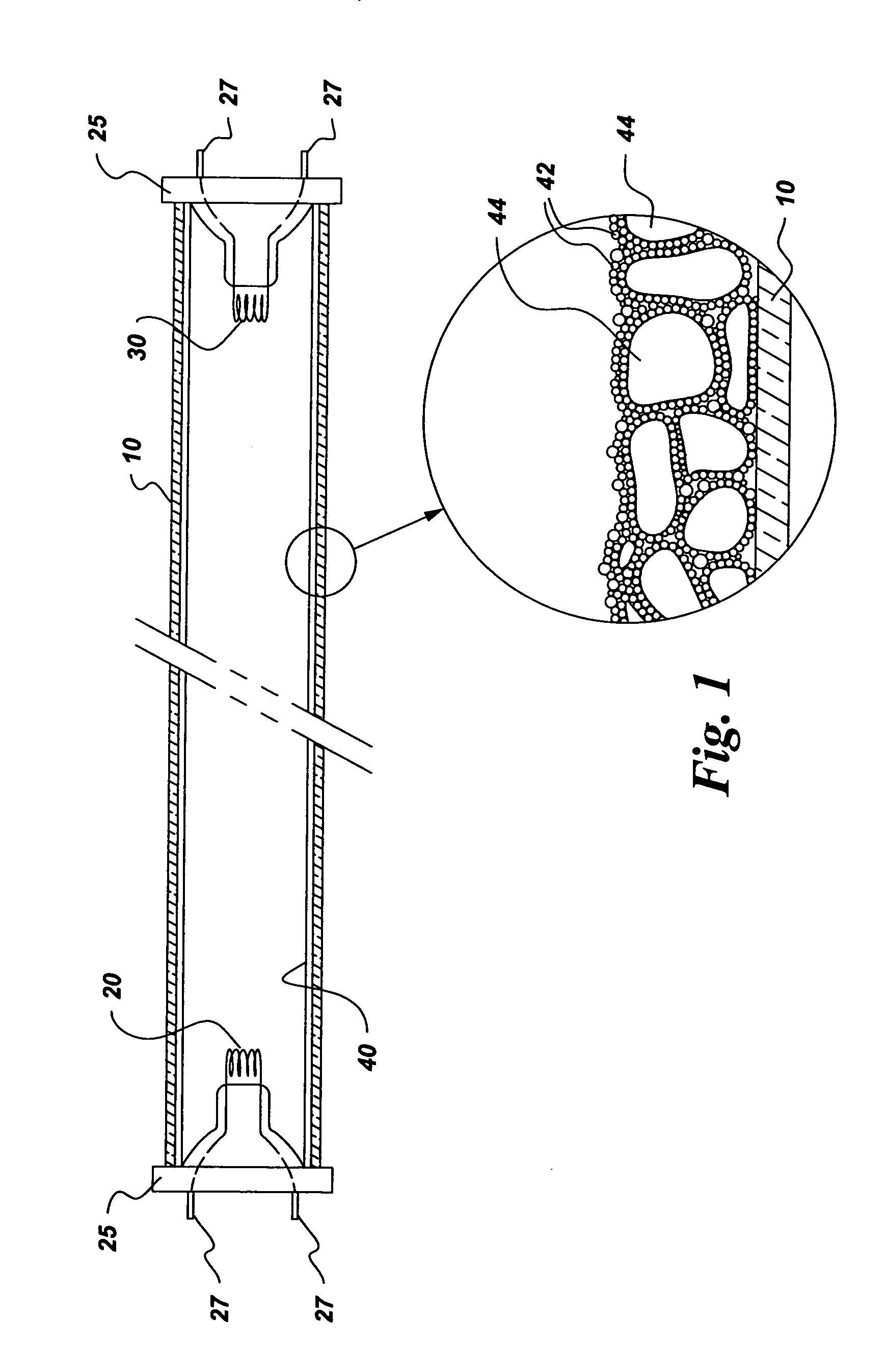Light sources with nanometer-sized VUV radiation-absorbing phosphors
a radiation-absorbing phosphor, nanometer-sized technology, applied in the direction of discharge tube luminescnet screen, cellulosic plastic layered products, application of light-emitting coatings, etc., can solve the problem of reducing the electro-optical efficiency in the service life of the lamp, not helping to increase the efficiency of the lamp, and reducing the phosphor emissivity in the course of tim
- Summary
- Abstract
- Description
- Claims
- Application Information
AI Technical Summary
Benefits of technology
Problems solved by technology
Method used
Image
Examples
Embodiment Construction
[0015] In the present disclosure, the terms “EM radiation” and “light” are used interchangeably. A light source, which is based on mercury gas discharge, comprises: (a) a source of plasma discharge that comprises mercury gas, which produces a plasma discharge that emits EM radiation, a portion of which has wavelengths shorter than about 200 nm; and (b) a phosphor composition that comprises a plurality of particles, each of said particle comprising at least a first phosphor and a second phosphor, said phosphor composition being disposed such that said first phosphor absorbs substantially said portion of EM radiation having wavelengths shorter than about 200 nm, and said first phosphor emitting EM radiation having wavelengths longer than about 200 nm.
[0016] According to one aspect of the present invention, the source of plasma discharge is contained in a sealed housing that is substantially transparent. The terms “substantially transparent” and “optically substantially transparent” m...
PUM
| Property | Measurement | Unit |
|---|---|---|
| wavelengths | aaaaa | aaaaa |
| size | aaaaa | aaaaa |
| size | aaaaa | aaaaa |
Abstract
Description
Claims
Application Information
 Login to View More
Login to View More - R&D
- Intellectual Property
- Life Sciences
- Materials
- Tech Scout
- Unparalleled Data Quality
- Higher Quality Content
- 60% Fewer Hallucinations
Browse by: Latest US Patents, China's latest patents, Technical Efficacy Thesaurus, Application Domain, Technology Topic, Popular Technical Reports.
© 2025 PatSnap. All rights reserved.Legal|Privacy policy|Modern Slavery Act Transparency Statement|Sitemap|About US| Contact US: help@patsnap.com

